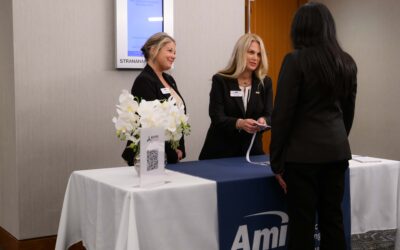The TED conference, now in its 26th year, continues to have a profound influence on the evolution of meetings and events. Besides the now famous 18-minutes or less format for speakers, the TED organization provides an excellent blueprint for organizers who seek to produce events that “foster learning, inspiration and wonder – and to provoke conversations that matter.” Whether you’re planning your Annual Conference, National Sales Meeting, or an Executive Retreat, these are worthy goals to strive for.
TED’s mission is to “spread ideas”. Or, as they state on their website:
“We believe passionately in the power of ideas to change attitudes, lives and ultimately, the world. So we’re building here a clearinghouse that offers free knowledge and inspiration from the world’s most inspired thinkers, and also a community of curious souls to engage with ideas and each other.”
Take a look and you’ll see that every aspect of their conferences, from the program format to stage design to the website, is created to support that mission. This perfectly corresponds to the goal of today’s Corporate Meeting Planner which is to create meetings and events where every detail supports the overall objectives of the company or organization.
Check out the section of TED’s website for hosting your own event. There is a treasure trove of information here that illustrates what we’re talking about, such as these tips for Creating a Powerful Program:
Format: Powerful, short talks focused on a single topic or idea. No talks exceed 18 minutes. Shorter talks are interspersed throughout. No keynote speeches — all speakers are equal. No panel discussions. No breakout sessions. No Q&As. No podiums or lecterns.
Schedule: We typically program 90-minute sessions, with four full-length speakers and a few short presentations. A full day would have four sessions, broken up by “conversation breaks” and lunch, and concluding with a reception/dinner. Be sure to allow generous breaks between sessions (your audience needs time to think about what they’ve seen), and try not to over-program! (It’s stressful for you and for your audience.) No session should last longer than 105 minutes. Pad each session with an extra 15 minutes, to account for transitions, introductions and other small delays that inevitably occur. Keep a steady rhythm.
Creating a program lineup
Within each session, you’ll want your program to cover a mix of topics that relate loosely to each other, allowing the audience to make connections and draw their own conclusions.
Think big: Encourage your speakers to connect their work and thinking to big topics — the universe, the future, global ideas …
Start strong: You’ll want to open people’s minds right from the start — so be sure your event has a very strong opening.
Mix it up: Break up your program with thrilling demonstrations and moving performances. Throw in a few shorter talks or counterpoints.
End with emotion: Save the most emotionally gripping speakers and TEDTalks for the end. This is when your attendees are most open to being moved. It will leave them with a feeling that will stay with them — perhaps motivate them into action.
Have you ever attended a TED event? Do you watch TED Talk videos? Have you been influenced by TED? We would love to hear your comments.


